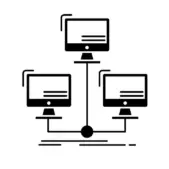In today’s digital-first workplaces, where employees juggle dozens of apps, devices, and communication channels, distraction isn’t just an annoyance — it’s a major barrier to productivity and innovation. While technology is intended to streamline work, poorly designed systems often fuel the very distractions they aim to solve.
Tristan Harris, a former Google design ethicist and co-founder of the Center for Humane Technology, addressed this tension in his influential TED Talk, “How Better Tech Could Protect Us from Distraction.”
His insights, which are now more relevant than ever, remind us that UX design choices directly shape focus, efficiency, and success.
Let’s explore key takeaways and how organizations today can apply them to build smarter, more mindful digital workplaces.

1. Distraction is Designed and It Can Be Redesigned
Research shows that workplace distractions can consume hundreds of hours annually; the equivalent of a full month of lost productivity per employee. Harris points out that distractions are not just external, they are learned behaviors reinforced by design.
For example, notifications, pings, and badge alerts condition users to self-interrupt every few minutes. Without intentional UX design, even mission-critical tools become sources of cognitive overload.
Today, leading platforms like Slack, Asana, and Microsoft Teams incorporate Focus Modes, quiet hours, and batch notifications to counteract these issues. Thoughtful UX gives users control over when and how they interact with information, empowering better deep work.
2. Workplace Messaging is the New Slot Machine
Harris likens checking workplace messages to pulling the lever of a slot machine: unpredictable rewards drive compulsive behavior. Each email, ping, or notification offers a small chance of something urgent or rewarding; keeping users hooked.
This metaphor is even more poignant now, as most digital workers toggle between messaging apps, project management platforms, and collaboration tools multiple times an hour.
Modern UX strategies can disrupt this dynamic by:
- Allowing users to schedule batch times to review messages
- Offering “work asynchronously” indicators inside chat platforms
- Using AI prioritization to highlight truly urgent communications
Designing for predictability and transparency over instant gratification helps employees maintain focus without missing critical updates.
3. Technology Doesn’t Have to Be an All-Or-Nothing Proposition
Business leaders often view technology choices as a binary: fully integrate or eliminate distractions completely. Harris argues that the real opportunity lies in redesigning systems to balance communication needs with focus protection.
Instead of banning notifications or cutting off messaging tools, organizations can:
- Implement status signaling features like “Heads-down Mode”
- Encourage async-first communication cultures
- Enable intelligent queuing where non-urgent messages are delayed until focus sessions end
With user-centered UX design, businesses can have both collaborative teams and deep-focus individual work — without forcing a compromise.
4. UX Design is a Business Imperative, Not Just a Convenience
Ultimately, Harris’ message is clear: UX design decisions impact the bottom line. Reducing digital distractions isn’t just about employee satisfaction; it directly influences productivity, innovation speed, retention, and even mental health.
Forward-thinking organizations today recognize that:
- Well-designed workplace platforms drive better outcomes
- Async-friendly UX reduces burnout
- Focus-first design accelerates project delivery and boosts morale
By integrating human-centered UX principles into digital workplace tools, businesses create environments where employees can do their best work and where technology truly serves, rather than hijacks, attention.
The Future Belongs to Focus-Centric Workplaces
In an era of constant connection, designing for focus is one of the greatest competitive advantages an organization can cultivate. Technology alone won’t drive success; how it’s designed and implemented will.
At UpTop, we partner with organizations to assess their digital ecosystems, identify friction points, and create UX-driven solutions that boost productivity, reduce distraction, and empower employees to thrive. Ready to build a workplace where focus fuels success? Let’s start the conversation.


